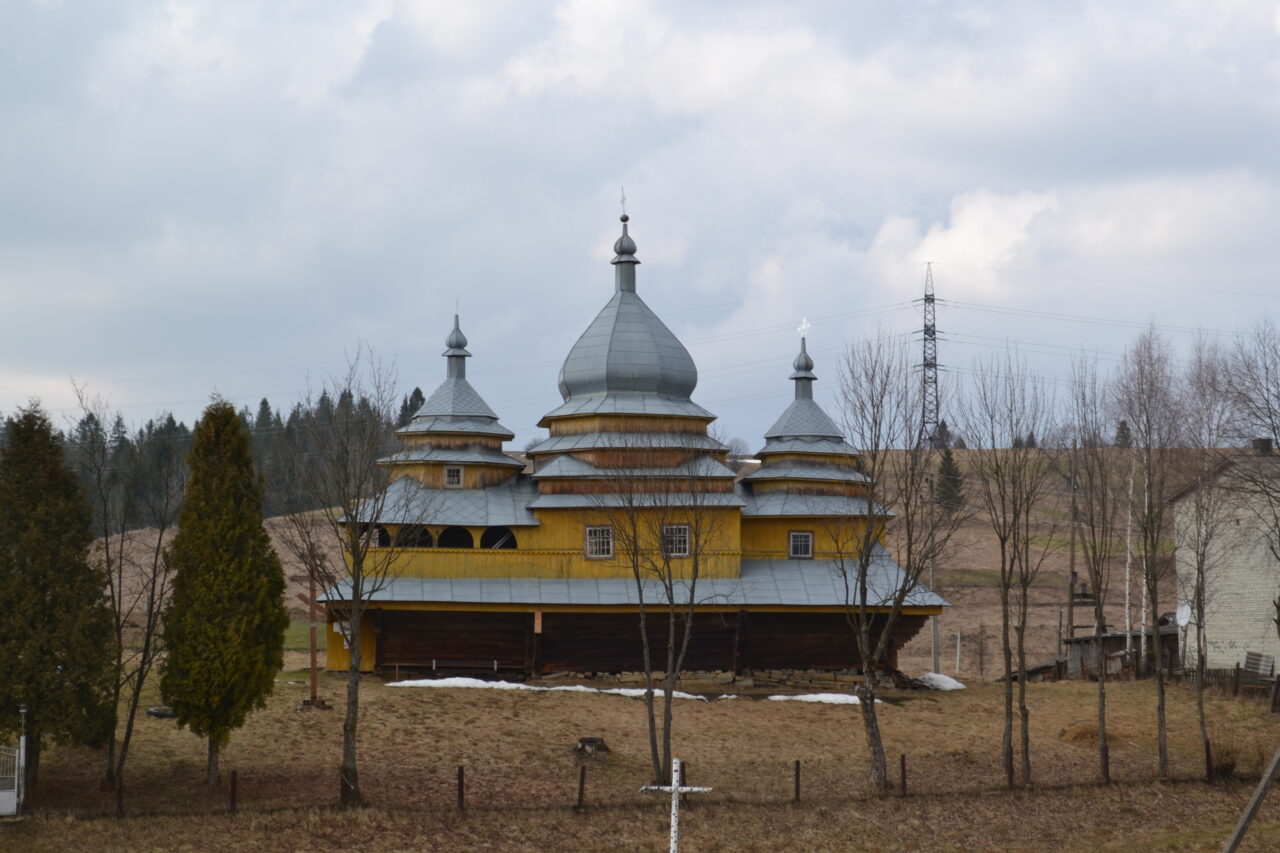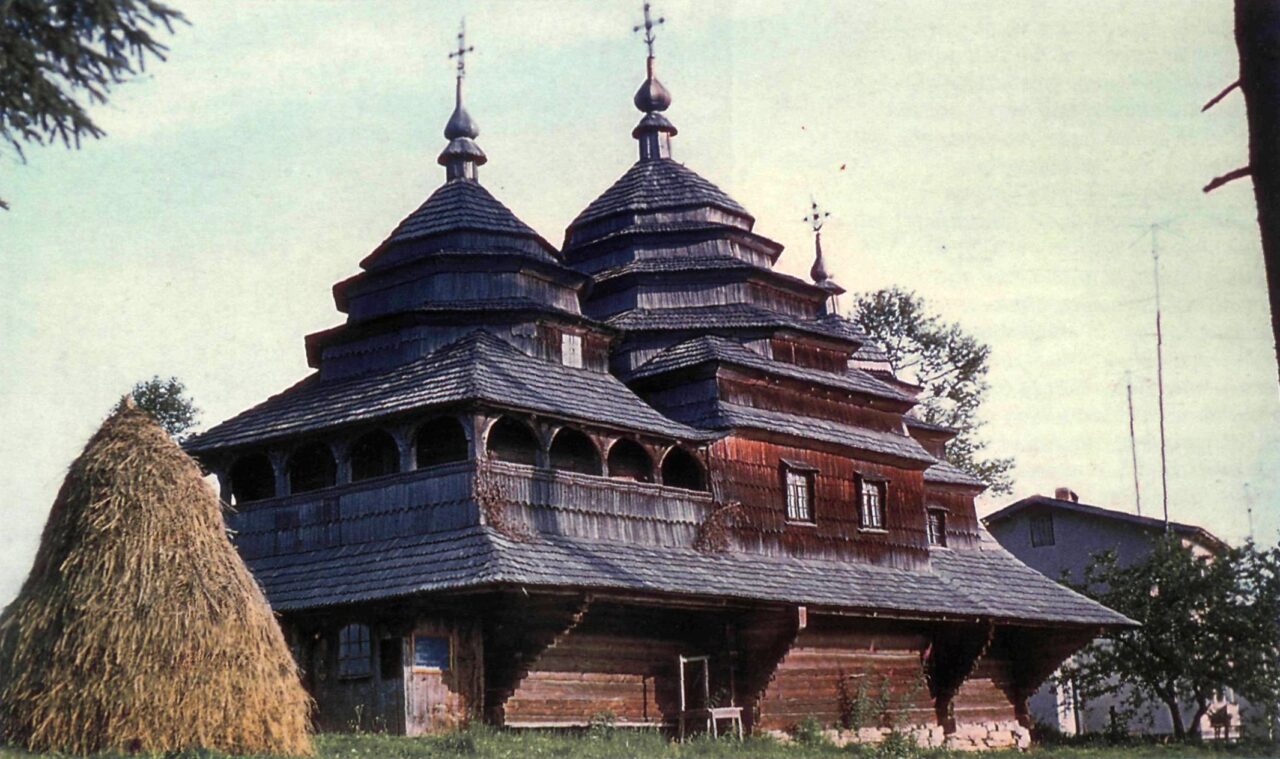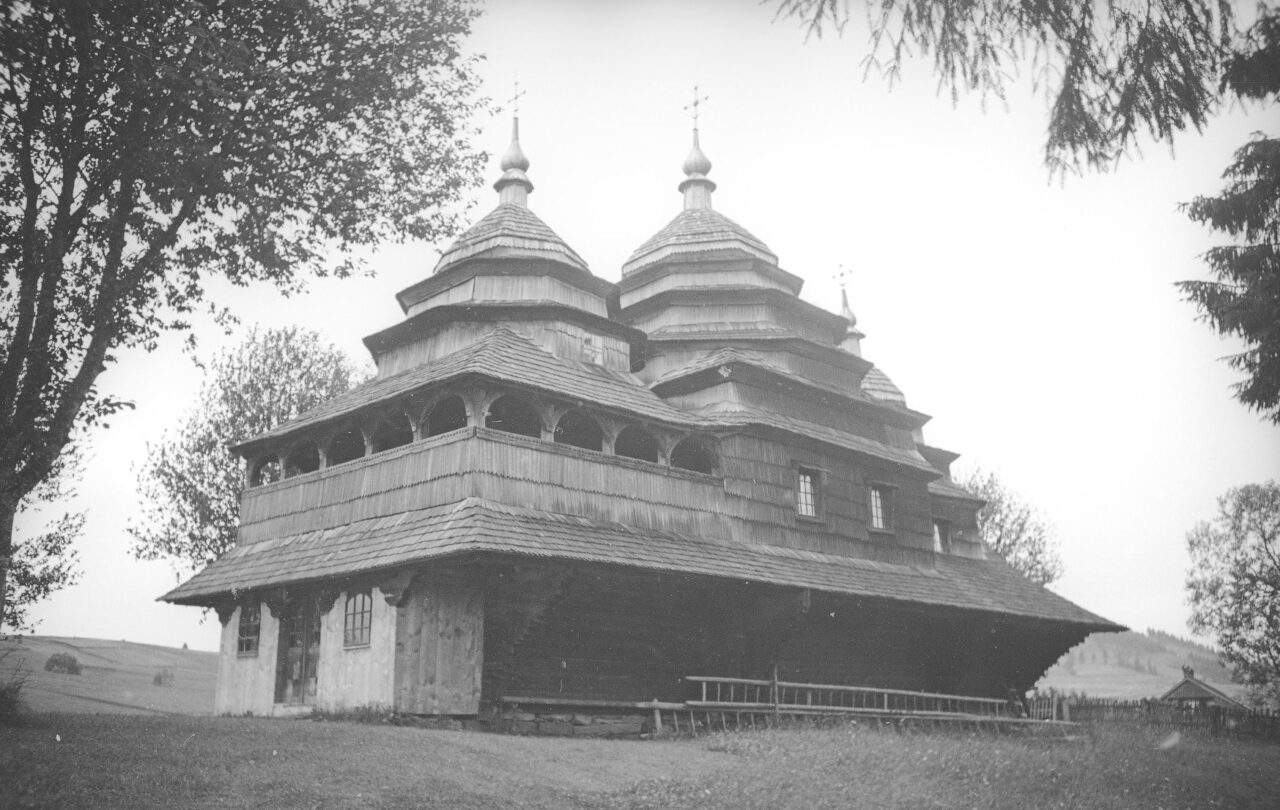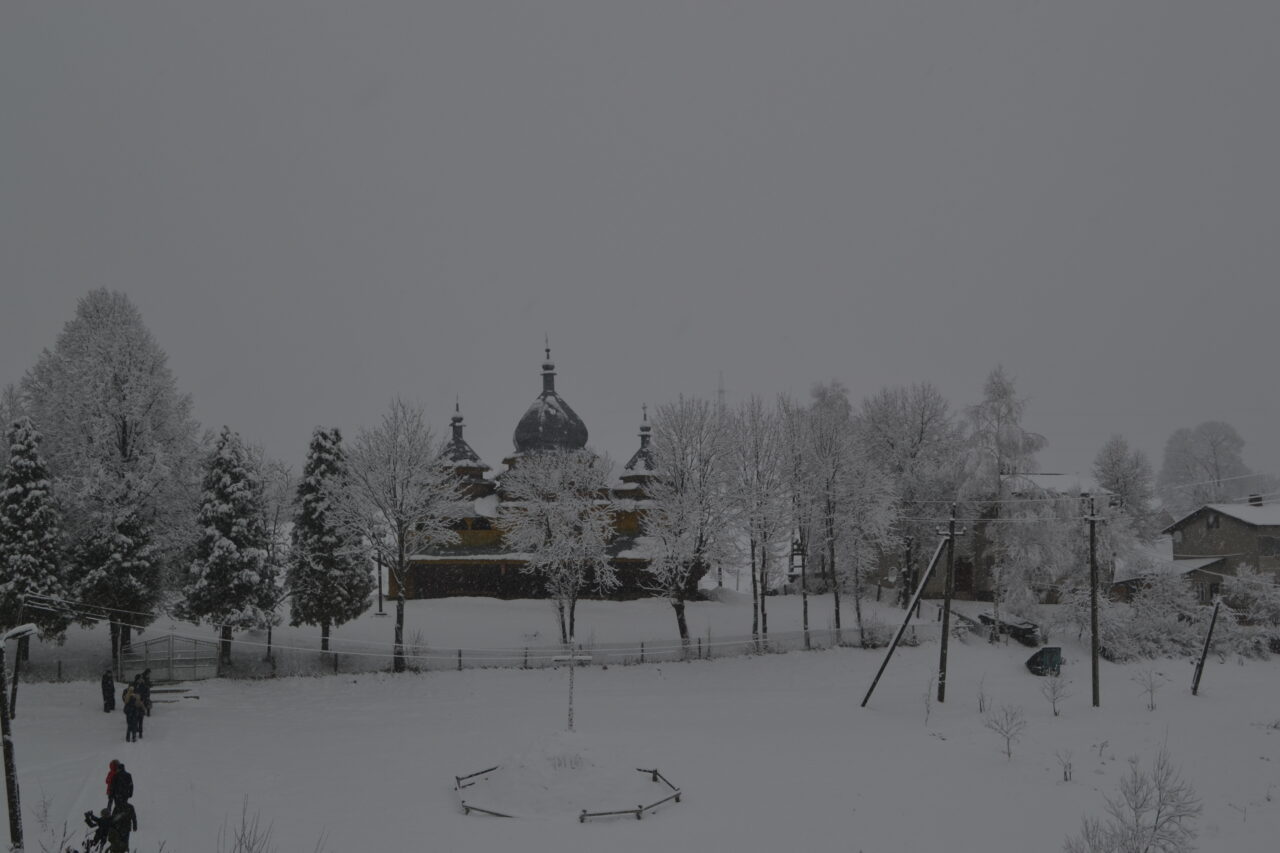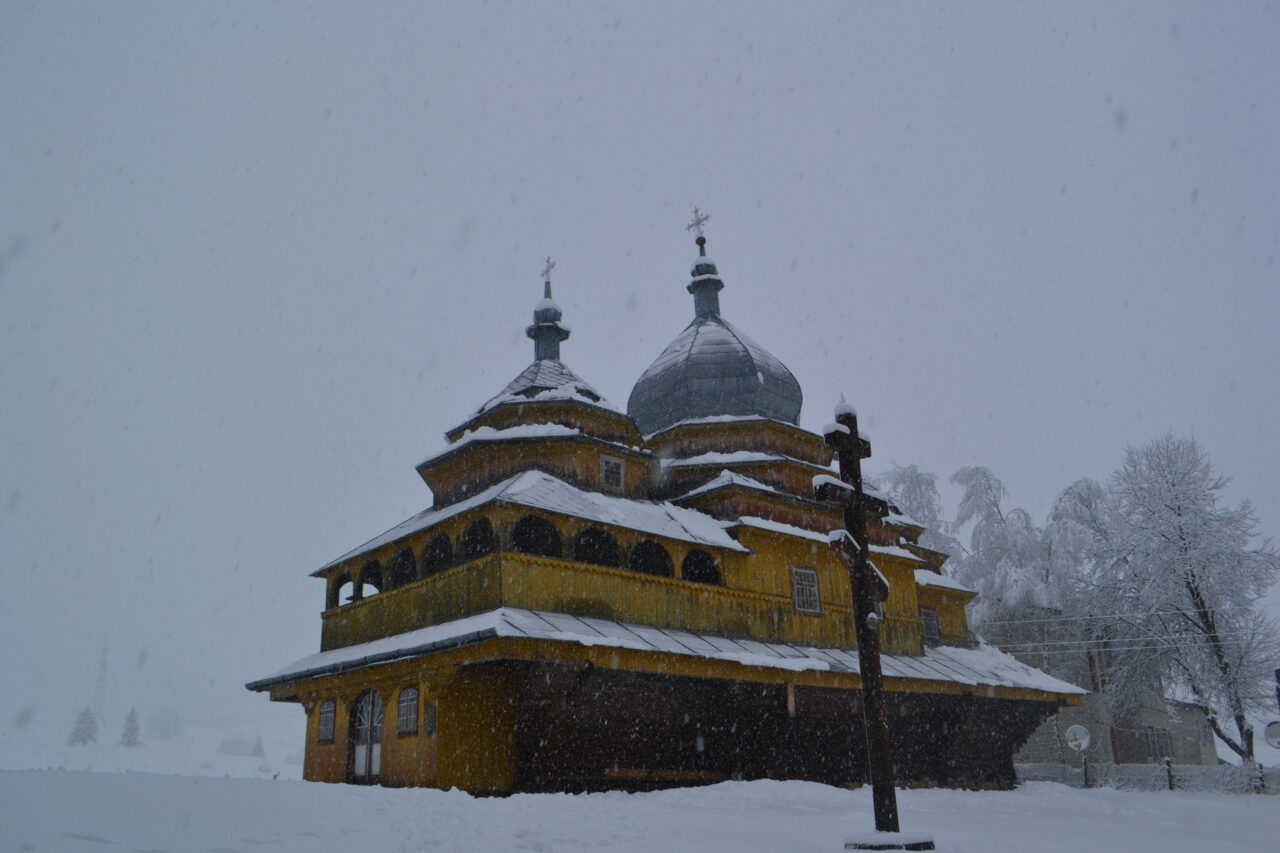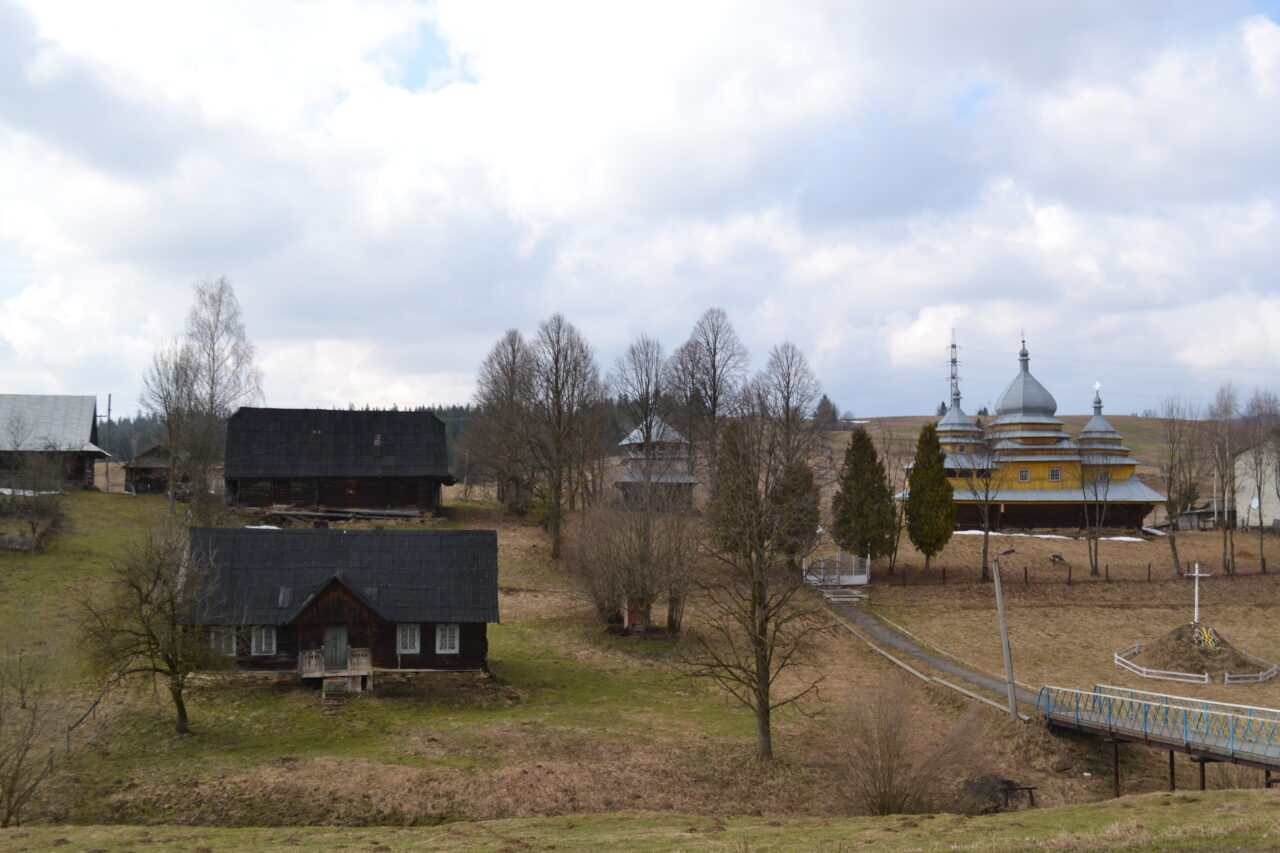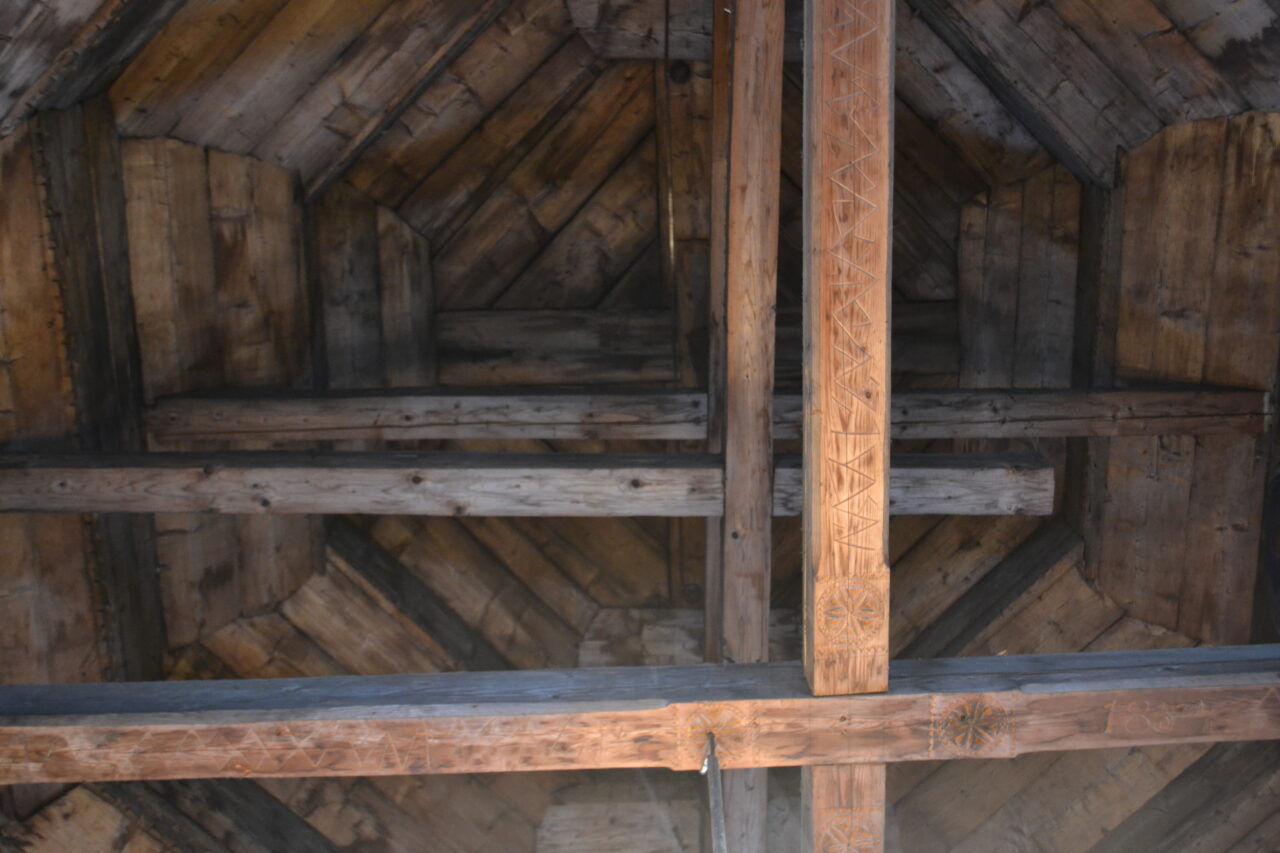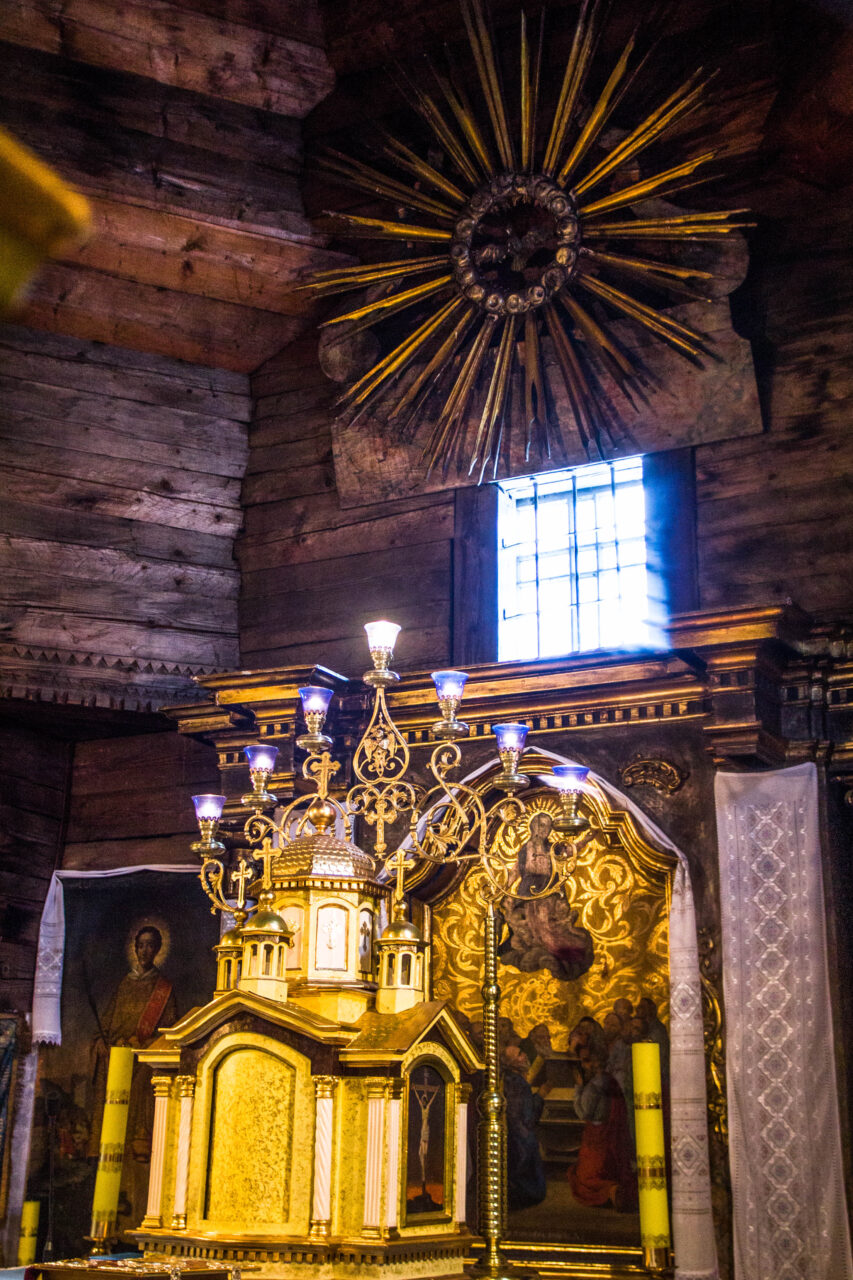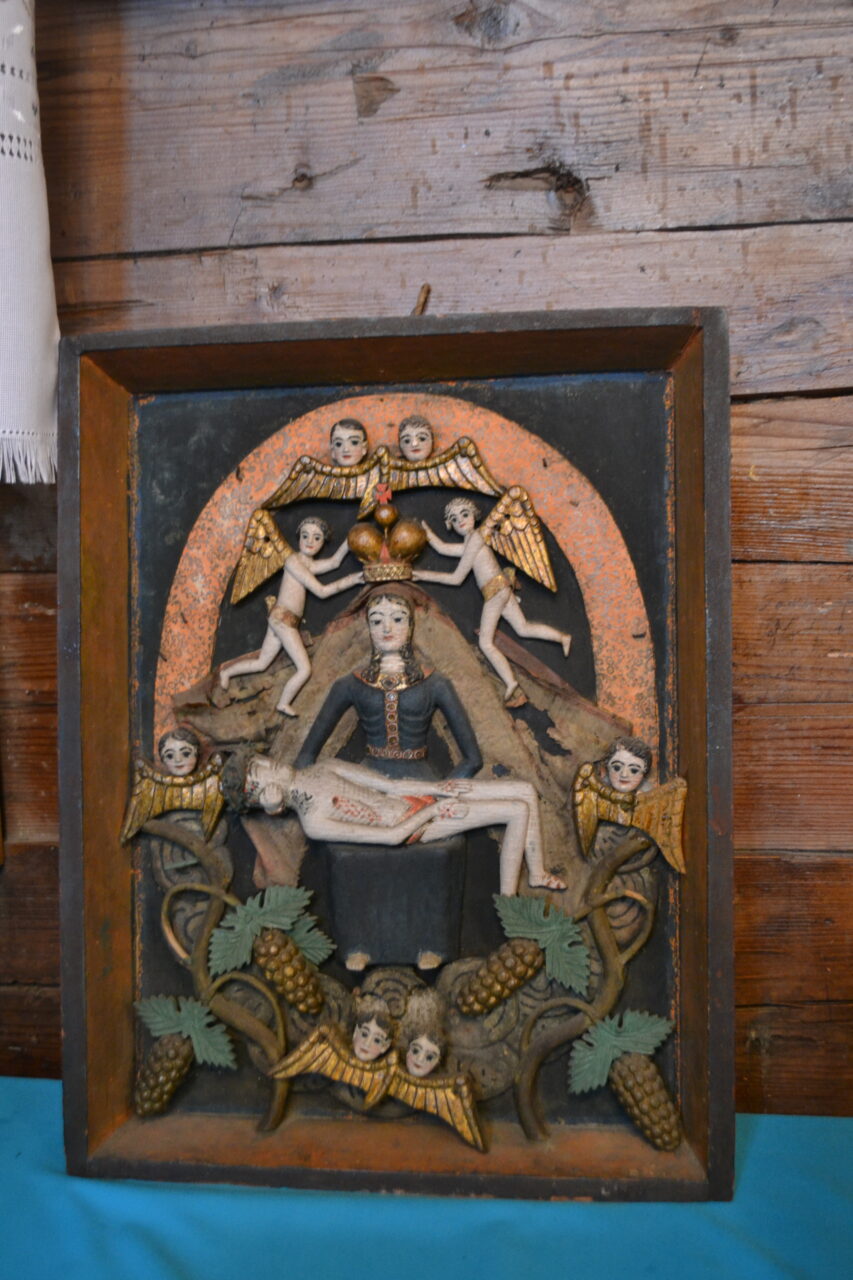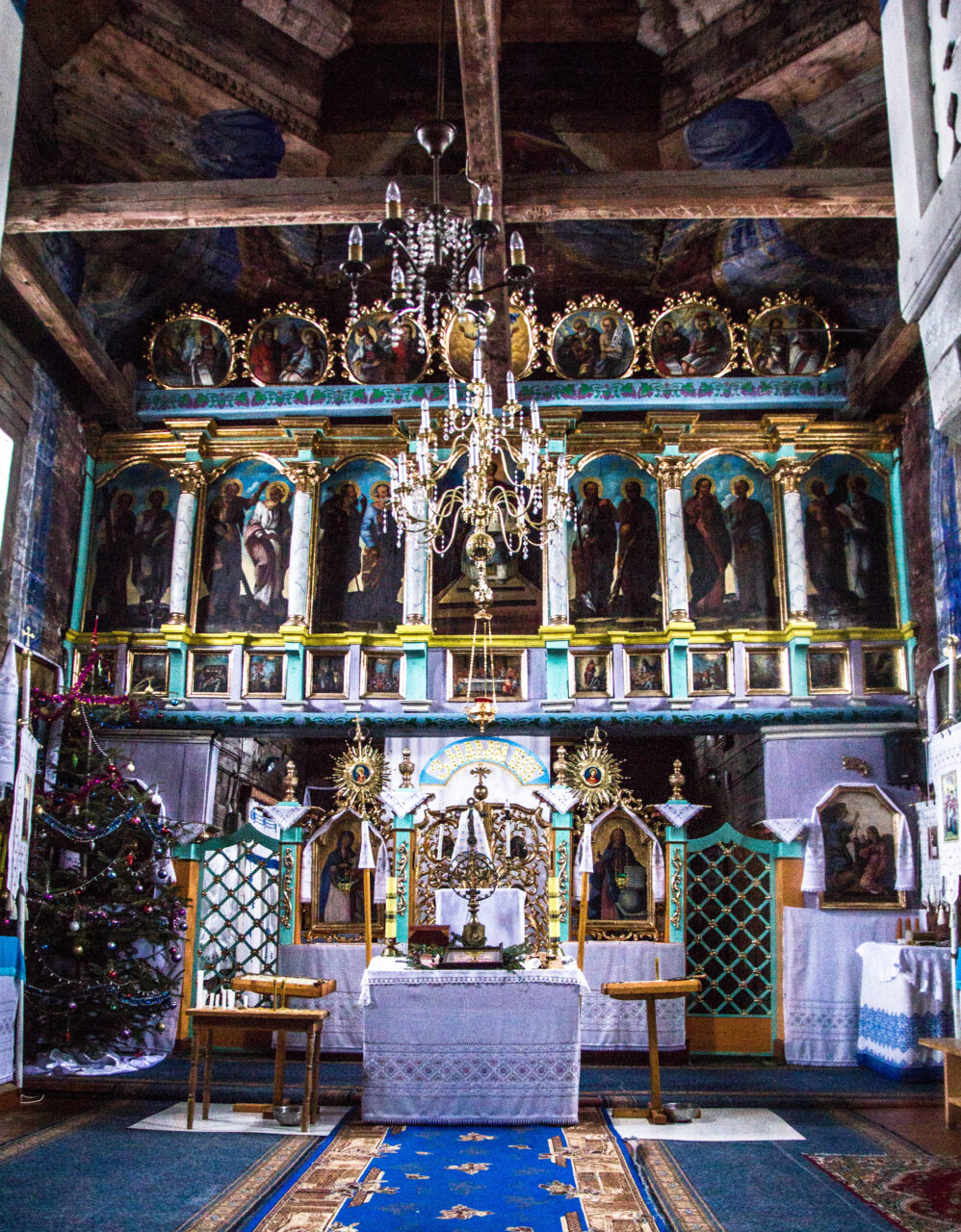The beautiful church was built to the south of the center of Tukholka and beside the road to Klimetst, a neighbouring village, in the middle of the 19th century. Up to the 1980s, it was the main road to Transcarpathia which went through the Old Veretsky Pass. There are two probable dates of the church establishment: either in 1845 or in 1858. However, the church has expressive architectural features characteristic of the 17th century. Did the tradition prove to be so strong?
A bell tower, an ever-present companion of our wooden churches, was built even later – in 1862. The year is written on the lintel of the building. It has two tiers, has a square shape, and its top is an eight-sided hipped roof with a lantern and a cupola. Now the bell tower is also under a tin top.
Any Internet search will give you lots of archival images of the church in Tukholka. How beautiful it used to be! Even in the photos of the mid-20th century, at the times of the USSR, the church was wooden from bottom to top – and to three shingle roofs. And of you count all the shingled roof layers, and the ambulatory, you will get as six rows. It was beautiful indeed.
Barons Grodli from Skole, the kings of the Beskids narrow gauge railways and drowsy Carpathian forests, favored the church. They helped the parish in Tukholka up til 1939, when the Soviets appeared in these lands.
The Soviets needed the Beskids but not their barons and churches, what’s their use? For several more years the church remained opened, but was closed on 8 August 1961. And only in the late 1980s the people began totimidly, uncertainly return the sacred purpose to the building. Initially, in January 1988, they held Epiphany on the neighbouring river. They came to the churchyard to celebrate Easter that same year in April. Finally, on 29 May 1988, the first liturgy took place within the walls of the wooden church. It was a significant year for the Christians in the USSR: it was a one-thousand-year anniversary of Baptizing the Kyiv Rus. There was no priest yet in Tukholka, so priests from other villages came tp serve here. On 20 November 1988, the church received a parish priest, Oleksiy Yurievich,. The fascinating history of that memorable year is engraved on a plaque nailed to a large metal cross outside the church.
Now the natural beauty of the wood is concealed under the tinplate. Even though this tinplate is of a calm gray color and does not shine as the titanium nitride, so popular among peasants, the shingles lost about 50 years ago would still be a better match. Let’s hope that the wooden church will survive in its metal armor the mockery over aesthetics and harmony. The authentic wood may now be seen only in the lowest part of the building. The ambulatory and the domes are covered with metal, and the walls with a vertical board siding.
The church looks very harmonious, even though the domes are not of a typical shape for the Boyko region. It gives the church an interesting silhouette and proportions.
A sacristy was added to the church’s altar. At the entrance to the temple, an empora, a gallery surrounded with arcades, overlooks the gynecium on the second tier, its graceful beauty preserved untouched. As a rule, emporas in our lands were built either for the women or the church choir. You may climb there on the outer wooden staircase.
The nave of the church is square. There is a four-angled roof with a cornice above it, and an eight-angled roof with a cornice above it. Still higher, are the lantern and the dome. The altar part of the Church of the Assumption of the Blessed Virgin Mary is also of a square form. And it changes the shape over the ambulatory to a five-angled with an eight-angled roof with two cornices.
A plaque outside the church says: “On the anniversary of the founding of the reading room of the fraternity of the Holy Mystery and the introduction of general sobriety on the day of St. Nicholas in 1895. This monument was erected in gratitude to God: members of these societies.”
A few years ago, a new wooden church in honor of the holy great martyr Josaphat was built in the Boyko style, but under the roof made of a shiny “fashionable” steel, some 200 meters from the “old” Church of the Assumption of the Blessed Virgin Mary. Its domes glow like lighthouses, sending signals to the cars rushing on the nearby Kyiv-Chop motorway. Three shiny tops appear for a few seconds on a hill a few hundred meters from the road – and then are hidden again by the rolling Carpathian hills. It seems as though Tukholka is sending S.O.S. signals, but is anyone going to hear them?

